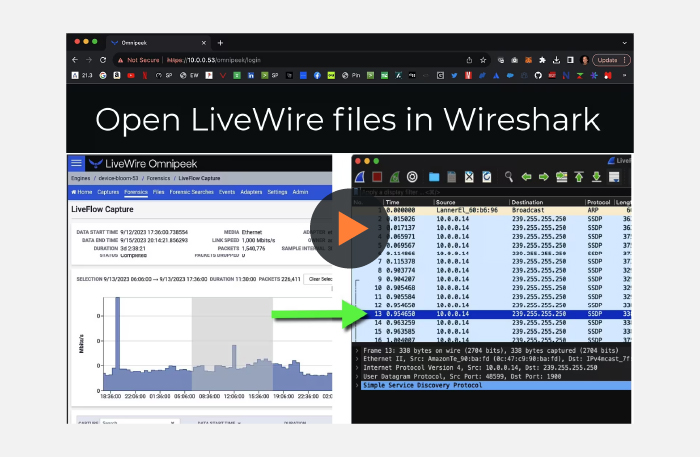
The Physical Medium Dependent layer in PHY describes the physical interconnections between stations and the types of cables that might be used for those connections.
What is a Physical Medium Dependent Layer?
The Physical Medium Dependent layer defines the various cable specifications within the Fiber Distributed Data Interface (FDDI) environment. FDDI was initially engineered to use a type of fiber optic cable called MULTIMODE fiber. Today there are many other types of media being used which include SINGLE-MODE FIBER, UTP (Unshielded Twisted Pair), Category 5 shielded twisted pair, and Synchronous Optical Network (SONET). PMD allows these various media to be standardized within FDDI by assigning an allowable ATTENUATION BUDGET between the transmitter and receiver. PMD allows an optical transmitter and receiver to be in the electrical “OFF” condition by defining the parameters for an OPTICAL BYPASS – which cuts a device out of an optical ring through a physical light conduit that simply lets the light go from the receiver to the transmitter without actually being retransmitted by the LED (Light Emitting Diode) or LASER in the station. The implementation of an optical bypass in an FDDI adapter card is optional. In this regard, by the way, PMD describes the energy output requirements for an LED or a LASER transmitter as well as the necessary sensitivities for a receiver system.
Shedding Some Light on Physical Medium Layers
The basic laws regarding light and its properties date back to the 1600s. Willebrord Snell formulated laws regarding the light as it passed from one medium to another (air to water, for example). In the 1800s John Thydall experimented with the fact that light could be guided through a medium. In 1880, Alexander Grahm Bell patented a device that transmitted a voice signal over a distance of 200 meters using a beam of sunlight as the carrier. By 1897, John William Strutt, the third baron of Rayleigh, (you’ll see later why I’m telling you this about John Strutt!) figured out the basic laws regarding the loss of light power as the light propagates in a medium.
Light, in a vacuum, travels at a rate of 300,000 kilometers per second, which translates to 186,282 miles per second. The propagation of light is affected by the characteristics of the medium in which the light is traveling. More specifically, the wavelengths of light that make up the various colors of the spectrum are effected to differing degrees. These are the characteristics of light that allow the astronomers to study the expanding universe with its ‘red shift’ and the gravitation of black holes. Good thing that’s all outside the scope of this text – I couldn’t help you with most of the physics involved. But, we’re going to brush up against some of this physics as we study FDDI. That’s why were discussing it.
Light has energy. When the energy is lower we see the light as the color red. When the energy is higher we see the light as the color violet. Do you remember Mr. Roy G. Biv? This imaginary physicist helps you remember the wavelengths of light, from the longer, lower energy Red light all the way through the spectrum: Red, Orange, Yellow, Green, Blue, Indigo, and Violet – the letters in Roy G. Biv. The amount of energy carried in the light beam can be transferred to the medium in which the light is traveling. This is called ATTENUATION – a loss of power. The attenuation level is critical in the design, implementation, and troubleshooting of an FDDI ring because a transmitter must put out a sufficient amount of light energy; the medium must not introduce excessive attenuation; and the receiver must be capable of responding to some minimum level of light energy.
The level of light reaching the receiver is also affected by the ‘straightness’ of the beam. That is, how focused is the light. When the light beam can’t travel in a straight line because of the physical makeup of the medium in which it’s traveling we say that the signal has experienced DISPERSION. Dispersion can be likened to being ‘out of focus’. If a speaker’s overhead transparencies are out of focus you can’t read the text on the screen in the front of the room. When a transmitter sends a bits of information it does so by turning the light on and off rapidly (125 million times each second with 25 million of those times being used for signal control; as we’ll see – to give you 100 megabits per second of data throughput in FDDI). If the signal is dispersed in the fiber optic medium the result is that some of the rays of light are taking a longer path through the medium and the data is, shall we say, out of focus. Consider the following picture.
Here you see two beams of light, “A”, and “B” being transmitted from the left side of the fiber optic cable. “B” has experienced a large amount of dispersion and has been deflected to the left, towards the inside edge of the medium. It bounces back and forth to reach the end. “A” travels in a straight line. As a result, “A” travels a shorter distance through the medium. “A” arrives before “B”. When the light signal turns off on the left, the receiver on the right doesn’t get the sharp, crisp, instantaneous “shut off” that was intended. The light rays that take longer to arrive just keep on coming! They travel during the time interval when the transmitter is in the “off” state. This has a limiting effect on just how fast the signal can be turned on and off. If the transmitter doesn’t wait long enough for all of the light to reach the transmitter he could, in theory (and, if FDDI adapter cards were designed by silly engineers – which we assume they’re not!) send a new signal that would overtake some of the slower beams from the previous signal. This ‘out of focus’ transmission wouldn’t work. The need for low dispersion is a requirement for FDDI medium and dispersion contributes to the upper limit of signal frequency.
When light strikes a material that is transparent, some of the light passes through the material and some of the light bounces back. That which passes through the material we say has been REFRACTED and that which bounces is REFLECTED. Light that is refracted is bent at the point of refraction. We’ve all probably seen the ‘classic’ picture of refraction; looking at on object underwater in the swimming pool.
Light from the sun strikes the key, resting at the bottom of the swimming pool in position “A” and reflects back to the eye of the observer. As the light passes from the water to the air, the light rays bend (refraction) and the observer thinks he’s seeing his key at position “B”.
The effects of attenuation, dispersion, reflection, and refraction all impact the transmission of light in an FDDI cable. We’ll see that there are specifications and considerations related to these aspects of the engineering technology – and now you know what they refer to!
Mr. Roy G. Biv will tell you that light is comprised of various WAVELENGTHS of energy. The wavelength of light is represented by the Greek letter Lambda (l). Another quality of the energy is the FREQUENCY at which it varies. Frequency is measured in cycles per second, often in thousands of cycles per second or “kiloHertz” (kHz), or millions of cycles per second or “megaHertz” (mHz). One “hertz” is one cycle per second. There is a relationship between wavelength and frequency. When a wave changes more times in each second (higher frequency) the associated wavelength gets shorter. The wavelengths of light extend from the very long, lower frequency wavelengths below the red end of the visible spectrum (called ‘infra-red’) the higher energy sunburn rays beyond the visible violet end (the ‘ultra-violet’ rays). Wavelength is measured in NANO-METERS (abbreviated “nm”). One nanometer is .000,000,001 meters. (This is one one-billionth of a meter – a very small distance to be sure!) Another unit you’ll encounter is the MICRON. “Micron” is abbreviated “mm” and one micron is one millionth of a meter (.000,001 Meter). Sometimes this is pronounced as a “micrometer” as if you were saying two words, “micro” and “meter”. Don’t confuse this pronunciation with the word for the instrument used to measure small distances: a micrometer. This word is spelled the same but pronounced as one word, “my-crahm-e-ter” to rhyme with “barometer. You’ll see this same definition repeater later in the text.
Visible light is in the region between 390 nm (blue light) and 780 nm (red light). We could have said that the visible light region is between .39 mm and .78 mm. Sometimes you’ll see wavelength specified in nanometers and sometimes in micro-meters. It depends on the author. It has been determined that some wavelengths of light are more effective for transmission through the silica medium that makes up fiber optic cables. The graph on the left shows that as the wavelength of light increases (from approximately .7 mm to 1.7 mm) there are some points where the transmission losses are less than or greater than other points. Three regions of the light spectrum are used for fiber optic transmission. At .85 mm, 1.3 mm, and 1.55 mm (850, 1300, and 1550 nanometers) it has been found that the glass medium transmits infra-red light efficiently. There are peaks in the graph that result from the interaction of the light with the hydroxyl ions that are impurities in the manufacturer of the fiber medium. Trust me on this one – there’s physics in action here and we’ll need to get our friendly neighborhood physicist to explain the issues any further. It’s a good thing that you won’t have to whip out your quantum mechanics quick reference card when you’re troubleshooting an FDDI network. Inventing it, yes; fixing it, no.
Various laws of physics and optics go into the design of fiber optic cable. Scientists and physicists are able to precisely calculate how light rays will bend as they pass through different types of refractive media. It is by manufacturing a fiber optic cable that has precise refractive and reflective properties and by controlling the attenuation and dispersion, that a transmission medium is produced.
This is the realm in which the PMD, Physical Medium Dependent layer operates. It is in PMD that the specifications that assure compliance with the ‘physics’ of the fiber are laid out. PMD defines:
- Cable types and associated construction and connectors
- Attenuation budget
- Optical bypass engineering considerations
- Transmitter and receiver specifications
Decibels and the Common Physical Medium Dependent Specifications
You will hear about three general implementations of media in PMD. The
- Single Mode Fiber (SMF)
- MultiMode Fiber (MMF)
- Twister-Pair Copper (sometimes called “CDDI”, “Copper Distributed Data Interface”)
In each case, the specifications talk about DECIBELS (which is abbreviated “dB”) of attenuation or decibels of power output. Before we can properly describe the characteristics of FDDI cables we’re going to have to explain the term “decibel” in the Next Topic.



